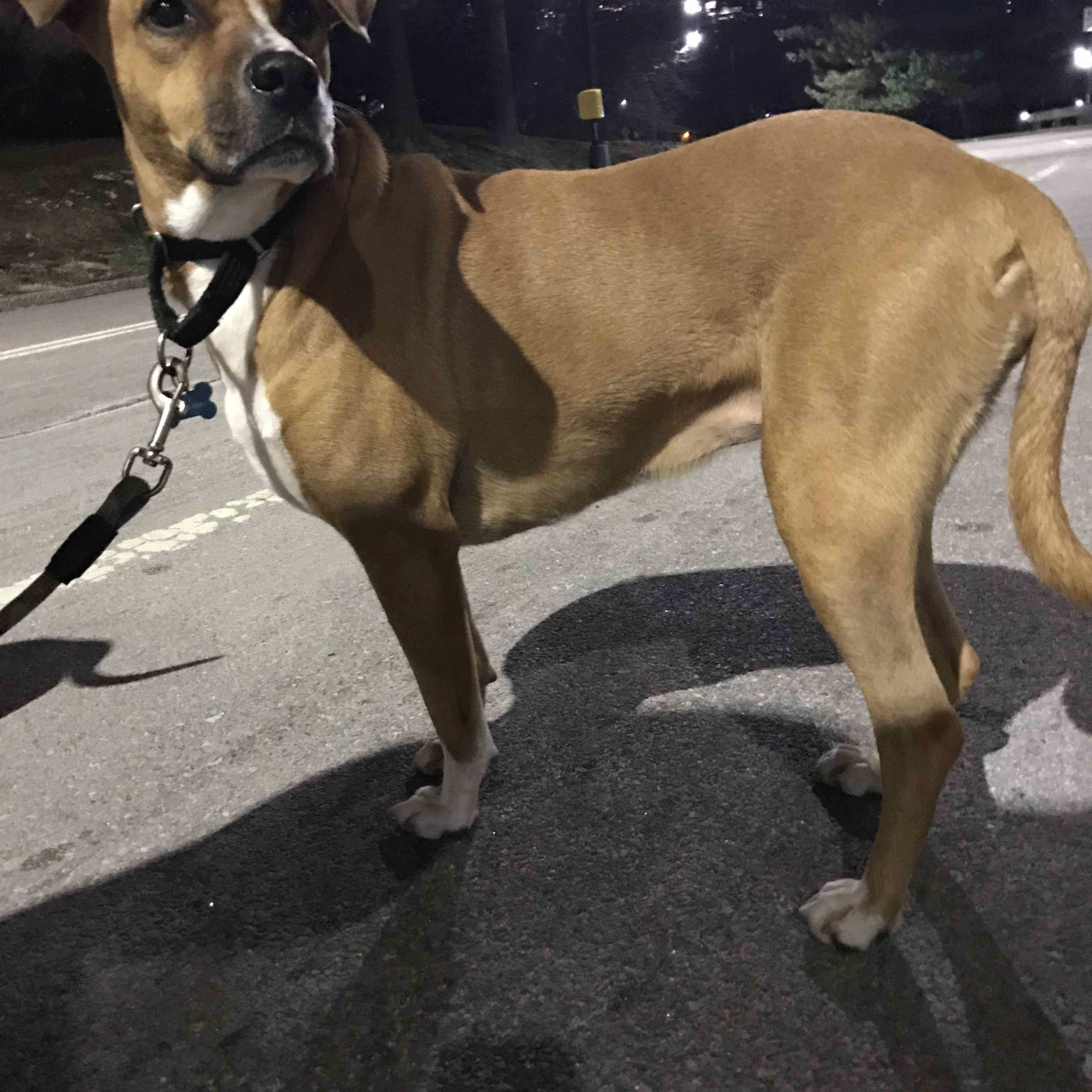
As the days get shorter and night falls earlier, it has become almost impossible to avoid a walk in the dark. There are several things you can do to make walking your dog at night much safer for everyone involved. >Before heading out the door, make sure your dog has his ID tags on and you have his leash securely attached. For your safety and your dog’s, bringing a cell phone is an excellent idea. If something goes wrong and you need to call for help, it will be right in your pocket. Most cell phones also have a flashlight feature which can be helpful when you need to use a poop bag during the walk.
It is very important to make sure you can see and be seen when walking at night with your dog. Cars, bicyclists, and even other walkers can pose a threat if they are unaware that something is in their path. To help with this problem, avoid wearing all black and consider using a brightly colored leash. Brightly colored and reflective gear can be especially important when walking a dog with dark fur as he can be nearly invisible at night. Reflective vests, leashes, collars, adhesive strips, and dog jackets can all make it easier to be seen by an unsuspecting driver. Gear that lights up (shoes, leashes, collar attachments) might also be a good idea as they do not require other sources of light to be seen. If you absolutely must walk along a road, it is best to walk against traffic in order to see the cars coming. Your dog should also walk on the inside, away from the cars, and be kept close by your side.
While your vision may not be the best at night, you don’t have to worry about your dog’s! A dog’s eye is quite different from a human’s, making it easier for a dog to see more at night than we can. While they cannot see in complete darkness, they can see better in low light due to the unique structure of their eyes. Dogs’ eyes have large pupils that can take in even dim lighting. They also have more rods that are extremely sensitive to light and motion. Perhaps the most unique feature is the presence of tapetum lucidum, a tissue that acts like a mirror by reflecting light from the back of the eye and allowing more light to be picked up and registered. The tapetum lucidum is the structure that makes dogs’ eyes (and cats’ eyes too!) appear to “glow-in-the-dark.”
It can be fun and rewarding to explore new paths, but that is best left for a daytime stroll. Sticking to familiar paths at night will ensure that you know where you are going and decrease the chances of getting lost. Paths that are well-lit will be safer for both you and your dog. When an area has sufficient lighting, you are able to spot any dangers lurking and your dog will be less easily startled. Always be aware of your surroundings. Not only should you be wary of strangers in the dark, but nocturnal animals as well. A cat or a raccoon might startle your dog or send him into chase mode. Flashlights are always recommended as they can light your path, help you pick up after your dog, and make you more visible to cars. They can be large and handheld, small and easy to carry in a pocket, or wearable and adjustable such as the kind you can wear on your head or attach to a hat.
While it can be discomforting to walk at night, the tips above will help to keep you and your dog safe after dark. Remember to always be visible and aware of your surroundings, and to make sure that your dog is close by your side.
Looking to book a dog walk?
By Callie T.

